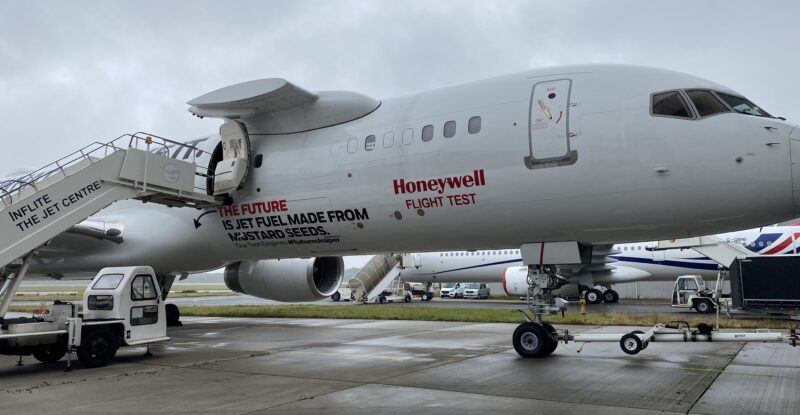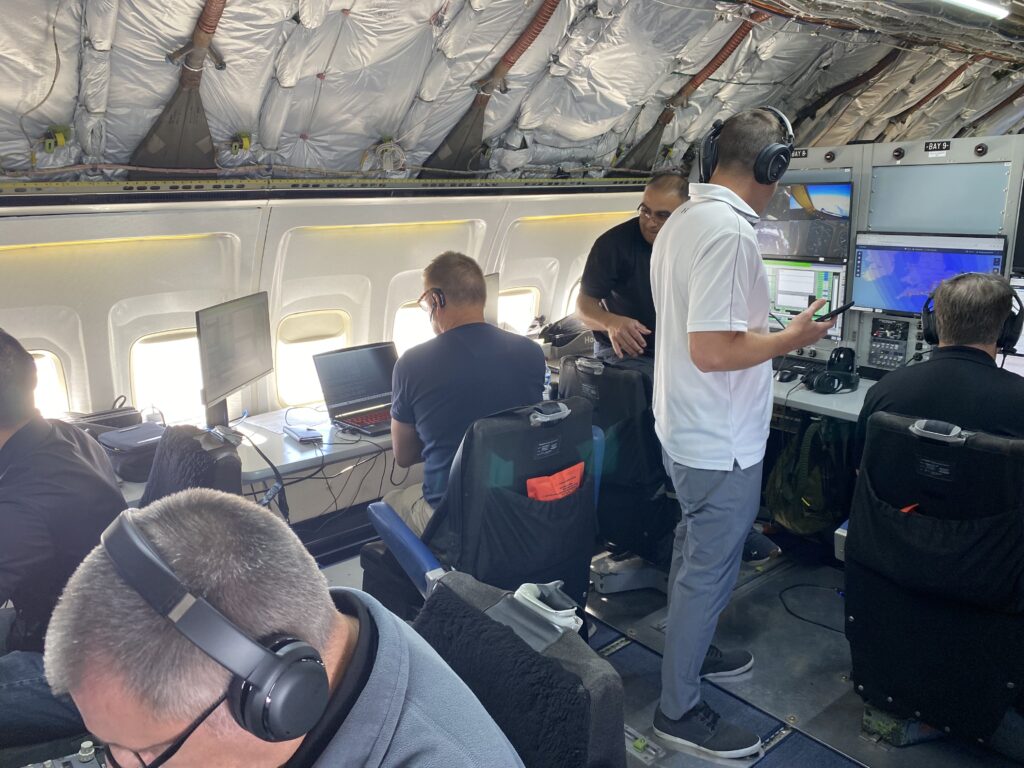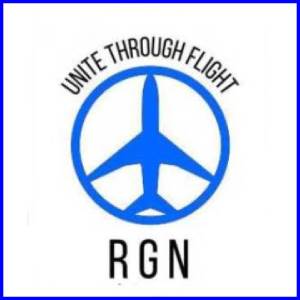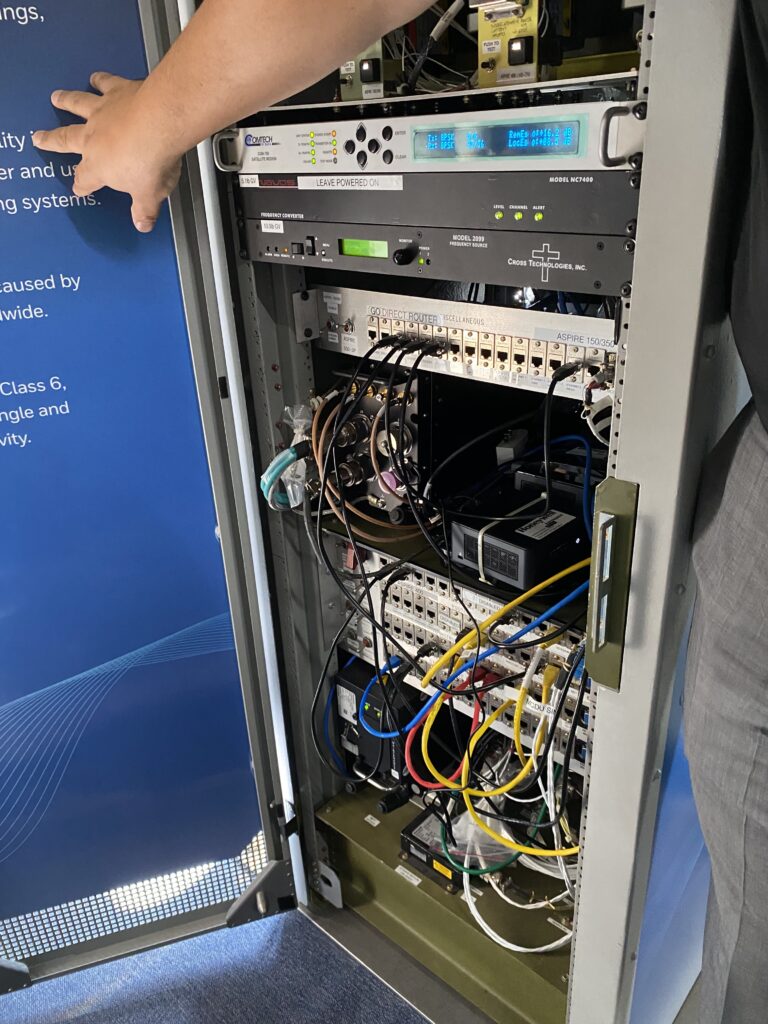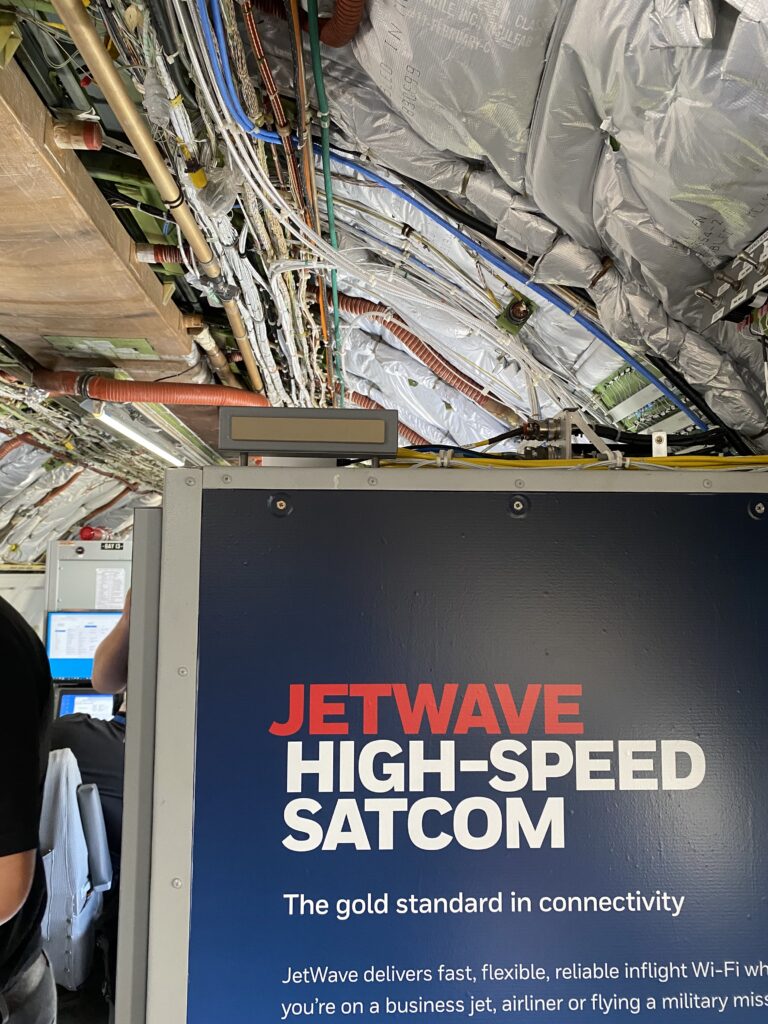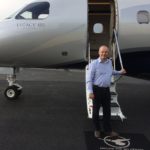 Honeywell’s Boeing 757-200 testbed aircraft is on a nine-stop tour of Africa, Europe and the Middle East, demonstrating resilient connectivity to potential defense and government customers and a handful of journalists. Delighted to be invited onboard the demonstration flight out of London Stansted Airport, I probably would have joined simply to fly again in one of my top five favorite airliners…!
Honeywell’s Boeing 757-200 testbed aircraft is on a nine-stop tour of Africa, Europe and the Middle East, demonstrating resilient connectivity to potential defense and government customers and a handful of journalists. Delighted to be invited onboard the demonstration flight out of London Stansted Airport, I probably would have joined simply to fly again in one of my top five favorite airliners…!
This is a storied machine. Built in 1982 and the fifth 757 delivered, it now has no fewer than ten connectivity solutions installed, among them Honeywell’s JetWave MCX-branded terminal for demanding mission profiles including in government and the military.
JetWave MCX is billed as being able to connect to nearly any Ka-band network, including Inmarsat-now-Viasat’s Global Xpress Ka-band constellation, the US Space Force’s Wideband Global Satcom (WGS), and other commercial and military Ka-band networks. In this instance, MCX was primarily using Viasat including a military version of Global Express.
Other systems installed include the L-band satellite-based SwiftBroadband offering from Viasat, which in the commercial aviation sector supports cockpit communications and safety services, and what modern web users would consider light cabin connectivity. A much smaller Honeywell Aspire 350 antenna system delivers services via Iridium’s nextgen Certus service, as powered by its Low Earth Orbit (LEO) constellation of L-band satellites.
Cellular network connections can also be accommodated on the ground. A surprisingly large pylon, high up on the starboard side of the forward fuselage (pictured at top), can test engines, although none were fitted for this tour.
We boarded the twinjet via the Inflite Jet Centre FBO. The facility’s comfortable interior proved a stark contrast to the 757’s utilitarian cabin, though the aircraft was certainly incongruous among the sleek business jets parked on the private terminal’s ramp.
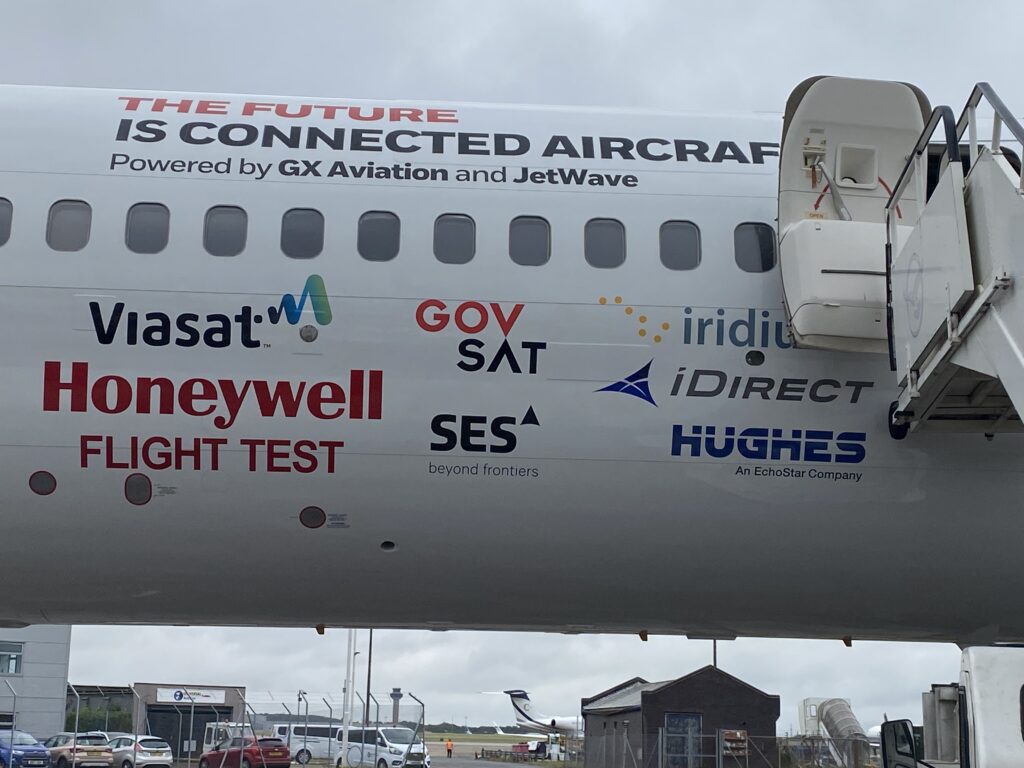
The 757 is a Honeywell test aircraft. Multiple Honeywell avionics are installed on this aircraft. Honeywell relies on industry partnerships to provide connectivity services. Image: Paul Eden
There are only 30 seats, including those for pilots and crew, onboard the 757, and they are installed in the area immediately aft of the cockpit. Cabling and structures are exposed elsewhere in the cabin. On the floor, the erstwhile seat tracks secure a range of equipment racks, cabinets and flight test facilities, including an office-like station mid-cabin for multiple flight engineers.
Among them, Wes Cook explained the testbed’s capability in a pre-flight briefing. “We’re demonstrating perhaps the world’s most highly connected aircraft. It has ten satcom
services available and we can integrate modems to get into any LEO or GEO network; we’ve demonstrated MEO too.”
Honeywell dubs this demo the ‘PACE demonstration’ — Primary, Alternate, Contingency and Emergency — in reference to the levels of connectivity in airspace where jamming, weather or operational requirements might limit one’s options.
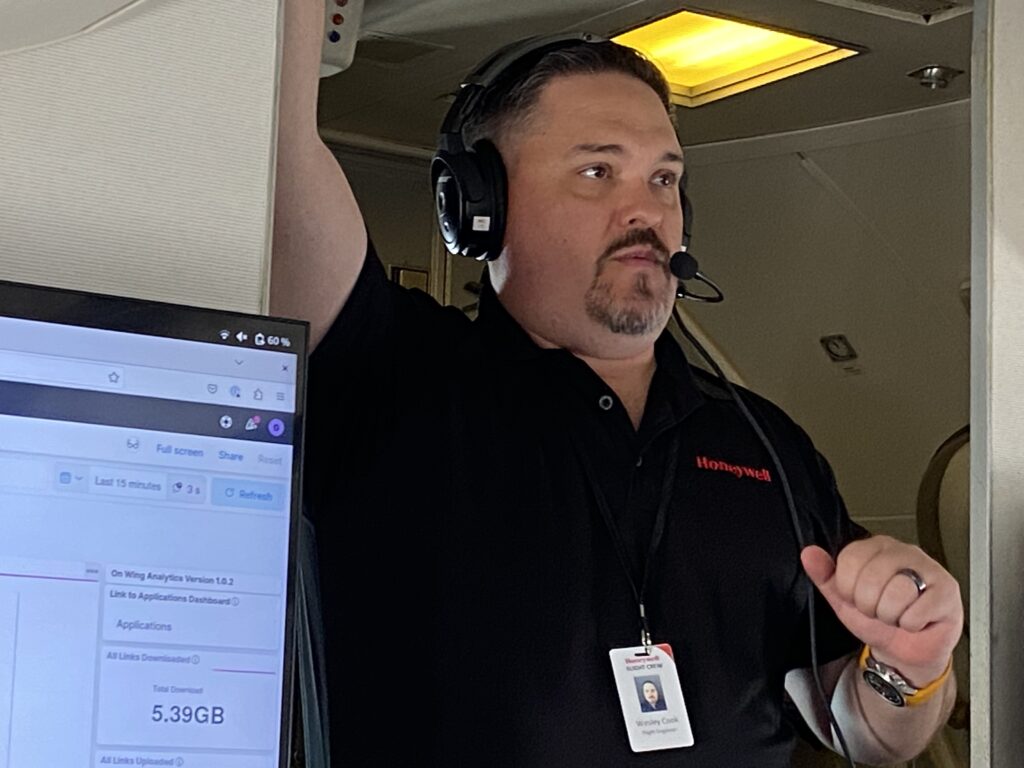
Flight engineer Wes Cook provides the inflight briefing. One of two large forward monitors shows 5.39GB of data downloaded just a few minutes after reaching cruising altitude. Image: Paul Eden
In the aircraft, the absence of lining panels means passengers and crew wear headsets, equipped with radio transceivers placed in a pocket for walking around once the seatbelt signs are off.
The peculiar feeling of sitting in a comfortable, probably ex-business class airliner seat wearing a Bose headset more familiar from helicopters was forgotten as soon as the Rolls-Royce RB211 engines spooled up on the runway.
Minus most of its passenger seats, with no luggage in the hold, no more than 20 people on board and fueled only for a quick jaunt over London and across southwest England, the 757 was very light, regardless of its test fit.
The sporty takeoff led into an impressive, sustained climb through the day’s murk, popping out into bright sunshine above a solid cloud base.
In the air, Cook used a pair of large monitors to show extraordinary data rates on and off the aircraft via multiple systems simultaneously.
The crew’s willingness to open cabinets and discuss modems, antenna steering equipment and other ‘boxes’ was laudable, the only downer coming from the in-cabin Wi-Fi network and its persistent dropping out.
But Honeywell’s personnel had emphasized the complexity of delivering resilient connectivity. The real-time flow of data was evident on monitors around the cabin and the lack of Wi-Fi easily fixed had this not been just a one-hour demonstration flight.
Related Articles:
- GPS jamming in aviation underscores industry need for Iridium STL
- Viasat favors own IFC kit for interoperability of Ka satellite assets
- Press Release: Honeywell completes acquisition of CAES
Featured image credited to Paul Eden




